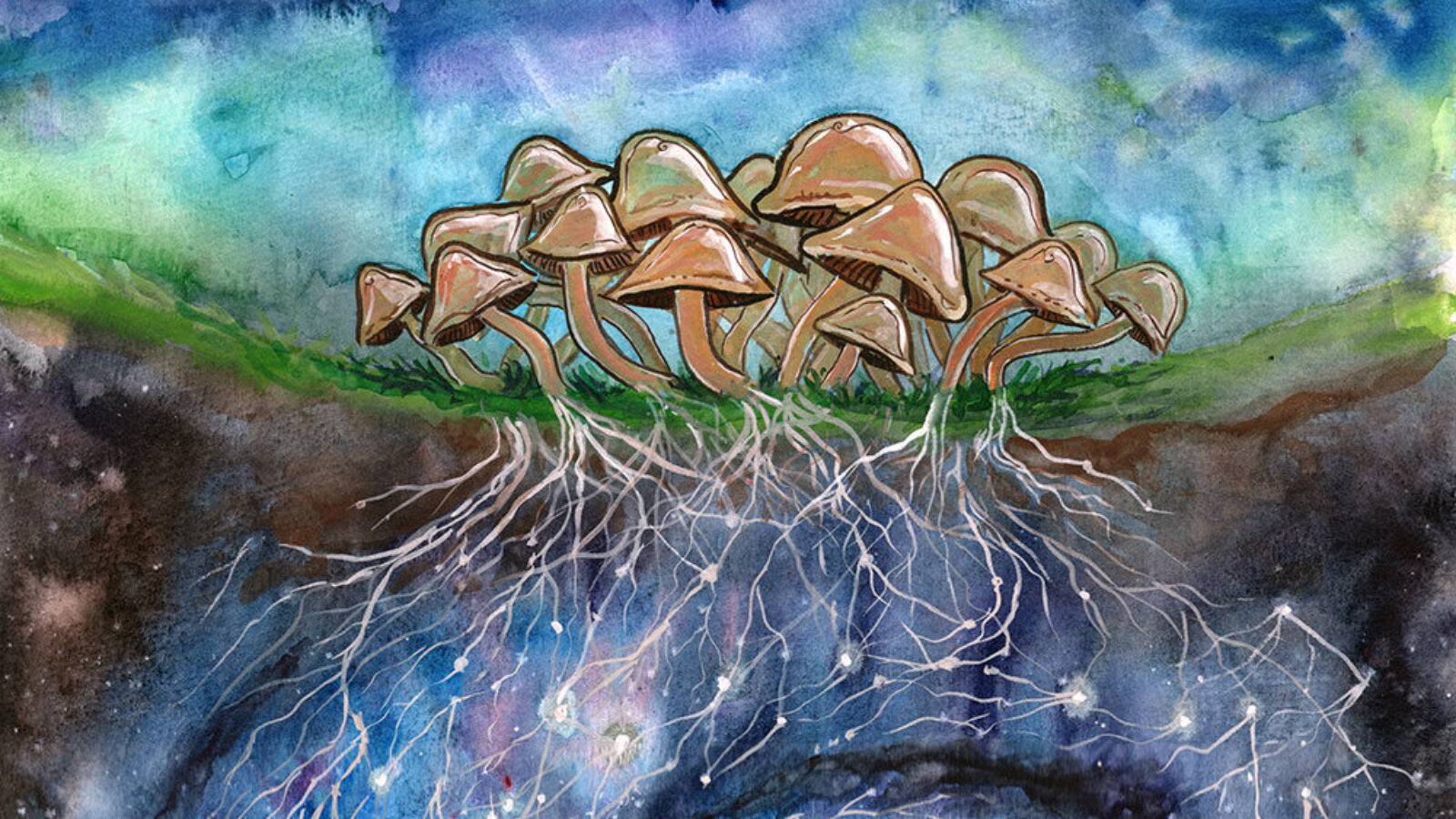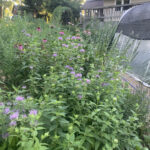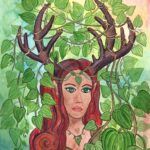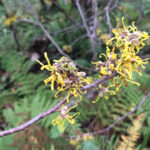It seems that religions or spiritual paths have a set of core orientations or philosophies that form the underlying foundation upon which the religion and practice rests. This core philosophy is like the seed from which the entire “tree” of the religion grows–the tree might branch in different directions, but all of those branches eventually lead back to that single seed. For example, in many forms of Christianity, we might see that core seed as salvation; this seed forms the bulk of Christian thought, belief, and action. In some forms of Buddhist thought, the seed is freedom from suffering. This underlying seed makes that particular path unique, form the foundation of what is considered right thought and right action on that path, give the path purpose, and that offers particular gifts to its practitioners or to the broader world. And most importantly, this seed drives a number of underlying morals, values, and assumptions that practitioners of that path hold.

Druidry is many things to many people, and the joke is that if you ask five different druids about what druidry is, you’ll likely get seven different answers. As scattered and diverse as the modern druid movement seems to be–I believe, we too, have a core philosophy (with at least three expressions of that philosophy), and I’m going to explore this underlying seed of our tradition in today’s post.
Sources of Inspiration
The flow of Awen for this post comes from a few places, and I want to acknowledge those first. Part of my insight comes from being in a leadership role in a major druid order in the US. I serve as the Archdruid of Water in the Ancient Order of Druids in America, and in that role, I interact with a lot of different kinds of druids at multiple points along their paths. I interact with people when they find druidry for the first time–what they are seeking, what they hope to find, and later, I see them as they move through our curriculum deepen their own understanding and interaction and the insights they have. I get to read their exams at the end of their time working through parts of our curriculum–so I’m hearing of the experiences of many on the druid path who have taken up this spiritual practice in a serious way. Additionally, part of my inspiration is personal; it comes from my experience in working through the complete curriculum in two druid orders, the AODA (1st, 2nd, and 3rd degrees) and the OBOD (bardic, ovate, and druid curricula) and coming to deep understandings over decade of time about that work. Finally, I have attended and been part of a lot of gatherings, online groups, and various initiatives. This post represents a synthesis of what I’ve read and conversed with others, and what I’ve generally understood over a period of time. But there is also another piece here– I’m also considering the overall trajectory of the druid tradition itself–not what we are, or were, but where we are heading and what potential exists for druidry in the future.
Therefore, this post is my take on the seed of our tradition, the underlying or core philosophy that drives much of druid practice. You might disagree with me, or want to add or subtract from this list–please do so and share in the comments what your own thoughts about what your version might look like.
On the Druid Revival
To understand the underlying core philosophy of druidry, we first need to delve back into the history of the druid revival and then move into the present day.
It is no coincidence that the very roots of the druid revival came about at the same time that industrialization rose in the British Isles. Farmers and peasants who had lived, sustained, and tended the land for countless generations were driven from their homes to work in factories (see, for example, the “Highland Clearances” and “Enclosure Acts” in Scotland). During this time, the rise in machine-based worldviews, that is, that humans are machines (and cam work like machines, act like machines), and that nature is just another machine, became dominant (we see the outcome of this thinking everywhere today, particularly, in industrialized agriculture).
Our spiritual ancestors watched this scene unfolding: the land stripped of her resources for industrialization and progress, the growing emphasis on produced goods over communities, the rampant pollution and exploitation industrialization was creating, the relegating of humans, animals, and the land to that of a machine. It was during this time that our spiritual ancestors reached deep–and creatively–into their own history to return to an earlier time when humans and nature were connected. The druid revival movement sought to reconnect with nature through ancient roots in a time when society was heading in the opposite direction. I believe it is the same reason that people today are so drawn to the druid tradition–there is “something” missing for them and it is that connection.
Now, a lot of the early druid revival works and authors have been discredited for creating “ancient” texts, drawing upon “found” materials that they had created, I find these attempts to discredit them problematic because they do not understand their context. These early attempts at bringing back the ancient druid traditions had a lot to do with people’s response to living in an age that was quickly stripping the lands of their resources and filling the skies and rivers with pollution. I think they were a bit desperate, and certainly, were working within the traditions of their age (and not ours). To me, the most important thing here is that druidry we practice today was descended from druid revival tradition and that tradition was a spiritual response that emerged during the very beginnings of this current age of industrialization. That means, these historical roots offers us much wisdom as we are living with the outcomes and consequences of this same industrial force.
Industrialization, with so much promise at the time, much harm not only to our living earth but to the pre-industrial communities and customs of the common people (a topic I picked up in some depth in my last series of posts on “Slowing down the Druid Way”). It is unsurprising, then, at the persistence and growth of the modern druid tradition in these times. For over 300 years, the ancient druids have offered our tradition sources of inspiration and reconnection. It is in this perpetual seeking of reconnection that we can see how druidry is, in some ways, very human response to the larger wheels of industrialization that have been thrust upon most of us in the Western world. In other words, druidry is us finding our way “home.”
Overall Druid Philosophy: The Power of Connection
What our spiritual ancestors in the druid revival were seeking, I believe, was (re)connection, a way to have a closer relationship with the living earth and with their own heritage. And it is in this historical view I see as the core seed of the philosophy of the druid movement: connection. It is this same connection that draws so many to the druid path today and keeps so many of us practicing this spiritual tradition.

In the modern druid movement, it is through the power of connection that we rekindle and learn how to cultivate a sacred relationship with nature, how to find our own creative gifts, and how to practice or path in a way that brings us wholeness and joy. When people come to the druid path, this is what they often are seeking. (As an aside: interestingly enough, there are at least two “denominations” of druidry, while all are descended from the druid revival traditions, in the 1970’s, and some went on to seek to reconstruct ancient druid practices and teachings. I think that these two currents of druidry do still share an underlying core philosophy of connection, even if it manifests incredibly differently and may not have the same three expressions I share below).
In this way, druidry is a direct response to the disconnection that those living in westernized culture have experienced: seeking to reconnect with nature, with our own gifts, and with ourselves. So now, I’m going to walk through three expressions of this underlying philosophy of connection through nature, connection to one’s creative gifts, creative arts, and connection to one’s spirit.
Connecting to Nature
To say that the druid path of nature spirituality is about nature perhaps seems like an obvious thing–but it is more than just being “about” nature. I can read books “about” nature and never step in the forest, I can understand in my mind many things about nature and her systems without ever connecting with nature through the heart. This does not give me a connection to nature, but simply some disconnected facts about it. When people ask what druidry is about, the first thing most share is that it is a path of nature spirituality, that it embraces nature and its relationship to nature at the core of its path, or that it honors nature through various activities (like seasonal celebrations). And yet, an individual druid’s relationship (and aspired relationship) towards nature is multifaceted. I see this nature orientation having at least three different aspects:
Nature is sacred. One of the key aspects of the druid tradition is the inherent worth and sacredness of nature. When interacting with nature, many humans focus on what is in relationship to us, that is, how does nature help us? What do we get out of it? As one begins to delve deeper and deeper into the druid path, I have found that a lot of that orientation shifts from “what can nature do for me” to “nature has inherent worth.” I see this in the mentoring work I do in the AODA–people begin taking up this path without any clear sense of the role of nature in their lives, but after a few years of druid study, observation, seasonal holidays, and the like, they have a profound shift in their orientation towards the living earth. The shift here is not just in seeing nature as something that has value to us because it offers us something (which, of course, it does) but rather, valuing nature simply because it exists and because we are a part of it.
Sacredness implies care and connection: we have deep respect, reverence, and awe concerning nature. We see it as something to be protected, preserved, and cherished. In the same way that other spiritual paths may see a shrine as holy, or a city, or a church, we druids see the living earth, her systems, and all life upon her, as sacred. As part of this sacredness, druids recognize the importance of living in harmony with nature and that nature provides all of our needs.
Relationship to Nature. When we think of how humans treat a sacred thing, a couple of possible iterations occur. One is that we might put it on a pedestal (literally or figuratively) and admire it from a distance, keeping it safe and secure. Although some conservationists take this approach (for very good reasons), this is typically not the orientation that druids take towards the living earth. Instead, most prefer to cultivate a sacred and powerful relationship with nature by interacting with her, connecting with her, smelling the roses and touching them and learning how to tend them effectively instead of just observing them from afar. Part of this relationship is that nature offers us teachings and deep understandings when we connect. This may involve regular visits to natural places and simply being “in nature” and various ceremonies in natural settings. Many druids take further, working to tread more lightly upon the earth and live sustainably, participate in active healing of the land, planting trees, and more. Relationship implies that we not only take but also give back.
Connecting to Nature’s cycles. Another major part of the orientation towards nature is becoming an active observer and participant in the cycles of nature. And nature has many cycles through which we can observe and participate cycles of the celestial heavens (the cycles of the sun or moon) that are tied to the land (seasons). These might involve the cycle of nutrients through plants, fungi, and soil, or even the cycles of water upon the land. The cycle is a critical part of the way that druids think about nature and build our sacred holidays and sacred activities around it, as is gardening and foraging and other such activities.
And so, connection with nature is certainly at the core of the druid tradition, but there at least two other pieces of connection that also seem central to this path.

Connecting with One’s Creativity and the Flow of Awen
A rekindling of our creative gifts, the bardic arts, and our human gifts is a second core part of the druid path. In fact, one of the core symbols of revival druidry, and a term we chant in our rituals, is “Awen” (another Welsh term pronounced “Ah-Oh-En”). Awen means “creative and divine inspiration.” It was “Awen” that flowed through the ancient bards as they crafted their stories and songs and delivered them to audiences all over the British Isles. It is Awen that flows from an inspired pen, hands, and body as we learn to once again express ourselves and be whole. It is the “Awen” that has been systematically stripped from us as we allow commercialized creations to take the place of our own. And it is the inspiration of Awen we seek as we reconnect with our own creativity gifts and expressions.
Let’s again tie this to how druidry itself came to be and what it responds to. Industrialization and modern commercialization and commodification teach people how to be good consumers rather than provide for one’s own needs. Today’s entertainment industry is a trillion-dollar affair. Our core birthright, that of telling our own stories, songs, poetry, dance, music, visual arts, sacred crafts–has been stripped away by these industries. We pay for mass-produced entertainment as commodities rather than create it ourselves. It is a sad thing, I think, to sit around a fire with a group of people in the 21st century and sit in silence because nobody knows what to do or how to entertain themselves (instead, they pull out their cell phones!). The fire is silent, the stories and songs are stilled–the Awen has yet to flow into the hearts and spirits of those there. But each person has an inherent ability to let the awen flow–through music, drumming, dance, song, stories, artwork, woodwork, and so many more things. In fact, if you come to a druid event and you’ll see a different kind of thing: a vibrant Eisteddfod (a Welsh term pronounced EYE-STED-FOD). An Eisteddfod is a bardic circle, a chance to share one’s creative gifts with a larger community, and it is one of the many ways that the druid path encourages people to reconnect with their own creative gifts.
If you come to a druid event and you’ll see a different kind of thing: a vibrant Eisteddfod (a Welsh term pronounced EYE-STED-FOD). An Eisteddfod is a bardic circle, a chance to share one’s creative gifts with a larger community, and it is one of the many ways that the druid path encourages people to reconnect with their own creative gifts.
Connecting to Individual Truths and a Personal Path
Most traditions have a set of core teachings, a sacred book, and a big part of the transmission of that tradition is to teach these materials to others and ensure that the set of beliefs and rules are followed by practitioners. In druidry, nature is our sacred text, and each human’s relationship and interaction with is different–we live in different ecosystems and climates, we are engaged in different kinds of work with the land, different cycles and seasons, and different needs. Because of this, we recognize and cultivate the development of and pursual of a personal path, and in the druid tradition, these differences are celebrated rather than minimized. If you join a druid order descended from the druid revival, we do have some common frameworks and practices, of course. In AODA, we have a common set of practices that gives us a framework; these include celebrating the solstices and equinoxes, working the sphere of protection, engaging in lifestyle changes, planting trees, observing nature, discursive meditation, and practice of the druid, ovate, and bardic arts. However, the specific expressions of a particular member’s own inner truth are central to the way in which those practices manifest, and are central to what additional practices are taken up.
This is to say, druidry is a spiritual path that takes creativity, inspiration, and work: it is up to the individual to establish his or her own personal practice, his/her own personal cosmology, and no two druids are the same.
And so, while most religions tell you what to believe and how to believe it–this is not the case with Druidry. I have found that this particular aspect of the druid tradition is really difficult for new druids and non-druids to wrap their heads around because to them, “religion” or “spiritual practice” requires adherence to a rigid, prescribed set of beliefs and behaviors. It takes a lot of conversation to explain the difference, that a religious practice could actually be something different. The question, “What do druids believe” doesn’t seem to be the right question to ask (but it is the question that most people start with). Two druids likely have the same larger philosophical orientations (as shared here) but not necessarily the same specific belief systems with regards to the nature of divinity, the possibility of life after death and reincarnation, the belief in spirits, and so on. For many druids, there are some common themes, but these common themes don’t extend to all druids. But what certainly seems to extend to all druids is the seeking of a personal path and connecting with that personal path at the core of one’s being. And this is an honored and sacred thing within our own tradition. (And so, better questions might be “what do you as a druid belive? or What do you do?)
I see this finding and following one’s own path as an inherently connecting kind of work: you develop a personal druid path by exploring your own meanings and what resonates with you, what connects to your own beliefs, your lifestyle, the work you feel you are to do in the world. It is through exploring these connections that you are able to settle upon a set of beliefs and practices that ring true. The more that you practice, the deeper those connections become. You might think of this like a path through the forest–there is underbrush when we begin, but the more we walk the path and establish what that path is, the easier the path becomes and the more it is open to us.
A Triad of Druidry
You might notice that my own presentation of the “connection” philosophy in druidry comes in a three-part form. The following is a triad of this presentation (a triad common teaching tool in the druid tradition descended from Welsh tradition, it is used heavily in the OBOD’s teachings).
Three philosophies of druidry:
Connecting to nature
Connecting to our creative gifts
Connecting to our souls
It is through the connection to nature that we can be inspired, foster our creative gifts, and ultimately, find our own paths deeper into ourselves and our core beliefs, practices, and work in the world.




Thank you Dana, this is so helpful and inspiring.
You are most welcome, Mary!
Hi Dana,
Happy Easter Sunday to you! I have my family visiting and we are painting eggs with spring themes.
I enjoyed your article and agree with it. I like it that Druidry is a set of practices but not a set of beliefs. The practices have been of great benefit to me and I continue to develop my path as I walk it. Much further along this path and I think we will have to register as Hobbits. It is a beautiful life.
Yours under the red cedars,
Max Rogers
Hi Max! The hobbit life sounds like a good one to me :). It is a beautiful life!
Reblogged this on Rattiesforeverworldpresscom.
Thanks for the reblog, Rattie!
Wonderful article. One of the things I find so interesting is that the question, “What do Druids believe” reveals the underlying worldview that a spiritual tradition begins and ends in the head. This is not a criticism of those who ask this question. I asked the very same question, and had the same struggles to understand, the first few YEARS I studied Druidry.
Once you release the idea that spirituality must be defined in the head FIRST, understanding Druidry (for me, anyway) becomes much easier. Since most of us are coming from an Abrahamic religion background, which is pretty much largely interested in what one believes (as a former church-goer, if I was checking out a new church, I would go to the website & look up “Our Beliefs”).
I often think of that somewhat-famous Margarer Thatcher quote: “Watch your thoughts, for they will become actions. Watch your actions, for they’ll become… habits. Watch your habits for they will forge your character. Watch your character, for it will make your destiny”, and I’m struck by how she assumes that everything starts from thoughts. (Which is a very Western Civ viewpoint.) And I think: “No, watch your intentions and your desires and what you preserve and value and – especially – what you want more of. Those will tell you where you are headed.”
Forgot to finish a sentence above. “Since most of us are coming…..” should end, “we tend to discount or mis-understand traditions that are more connection/heart based.”
Hi Janet,
Thank you so much for this comment. You are absolutely right and this is a really useful line of thinking to continue this discussion. It ties to Steven Harrod Buehner’s work on herbalism, where he shares indigineous ways of knowing, and the idea that most Native American tribes believed their soul and center of their being resided in the heart, not the head. Shifting that perspective, to the heart, seems to have a domino effect to shifting everything else.
I know what you mean about wrapping your head around the wrong question–I too, struggled even with articulating what druidry was for years after I became a druid. My heart had led me to this path, but my head wanted to try to sort it all out and specify it, which ended up in a lot of confusion. Its taken me a long time to get past that, but now that I have, I think I can really appreciate the path more for what it is 🙂
I so love reading your blog 🙂 It reminds me that the old ways are not dead, just re-birthed in a new form.
That’s it! They are helping us re-envision and reconnect each day :).
I really appreciate this post delving more deeply to the underlying spiritual foundations for Druidry.
You are most welcome, Talis! Thank you for reading 🙂